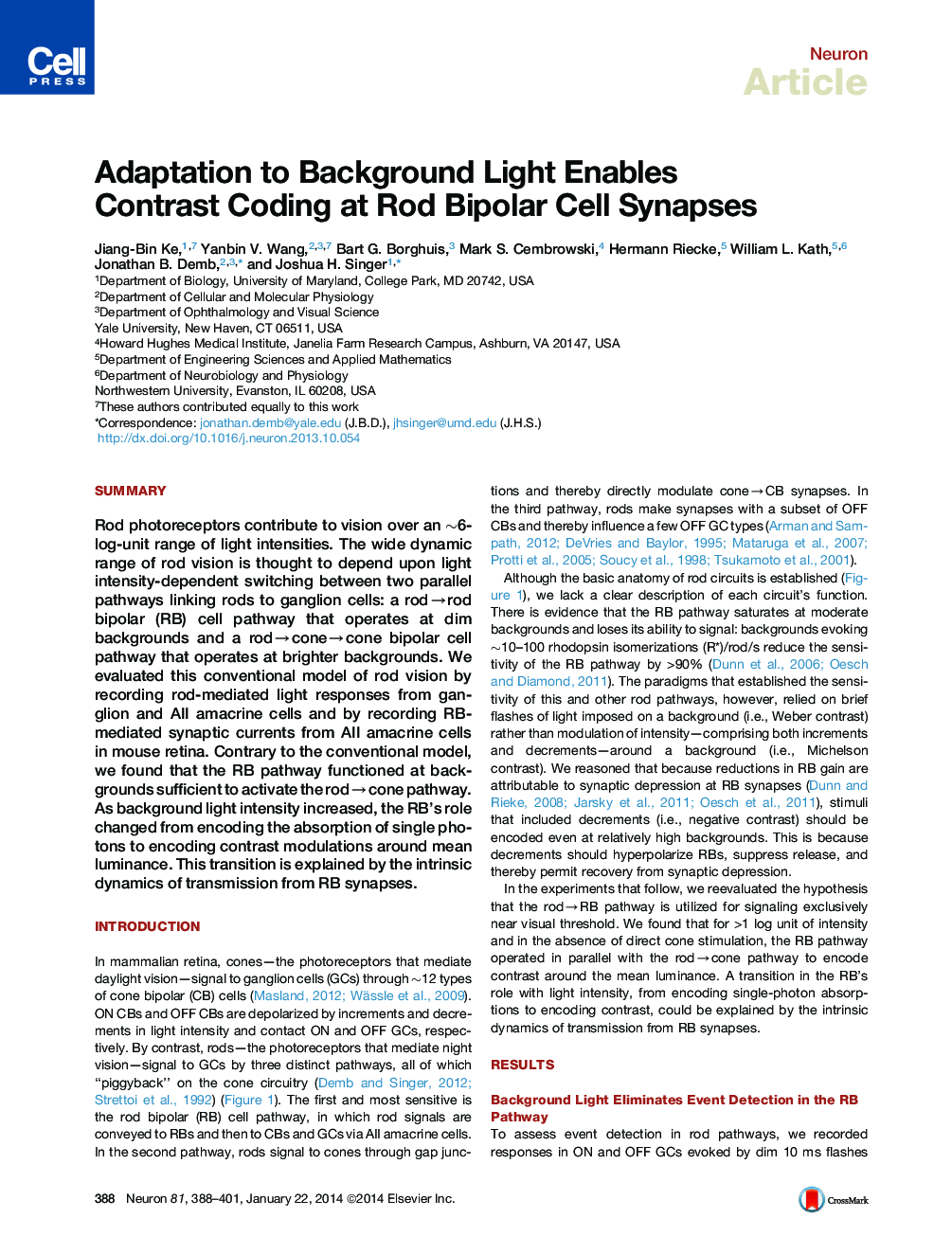| Article ID | Journal | Published Year | Pages | File Type |
|---|---|---|---|---|
| 4321202 | Neuron | 2014 | 14 Pages |
•Multiple retinal pathways for rod vision operate in parallel•Rod bipolar cells function in two modes: event detection and contrast encoding•Rod bipolar cell ribbon synapses exhibit band-pass temporal tuning•Contrast coding and temporal tuning depend on intrinsic dynamics of vesicle cycling
SummaryRod photoreceptors contribute to vision over an ∼6-log-unit range of light intensities. The wide dynamic range of rod vision is thought to depend upon light intensity-dependent switching between two parallel pathways linking rods to ganglion cells: a rod→rod bipolar (RB) cell pathway that operates at dim backgrounds and a rod→cone→cone bipolar cell pathway that operates at brighter backgrounds. We evaluated this conventional model of rod vision by recording rod-mediated light responses from ganglion and AII amacrine cells and by recording RB-mediated synaptic currents from AII amacrine cells in mouse retina. Contrary to the conventional model, we found that the RB pathway functioned at backgrounds sufficient to activate the rod→cone pathway. As background light intensity increased, the RB’s role changed from encoding the absorption of single photons to encoding contrast modulations around mean luminance. This transition is explained by the intrinsic dynamics of transmission from RB synapses.
